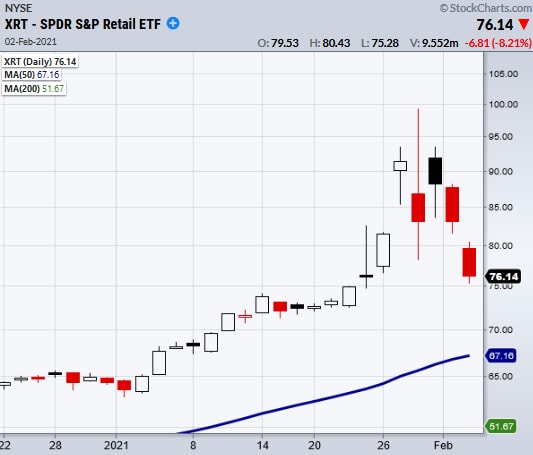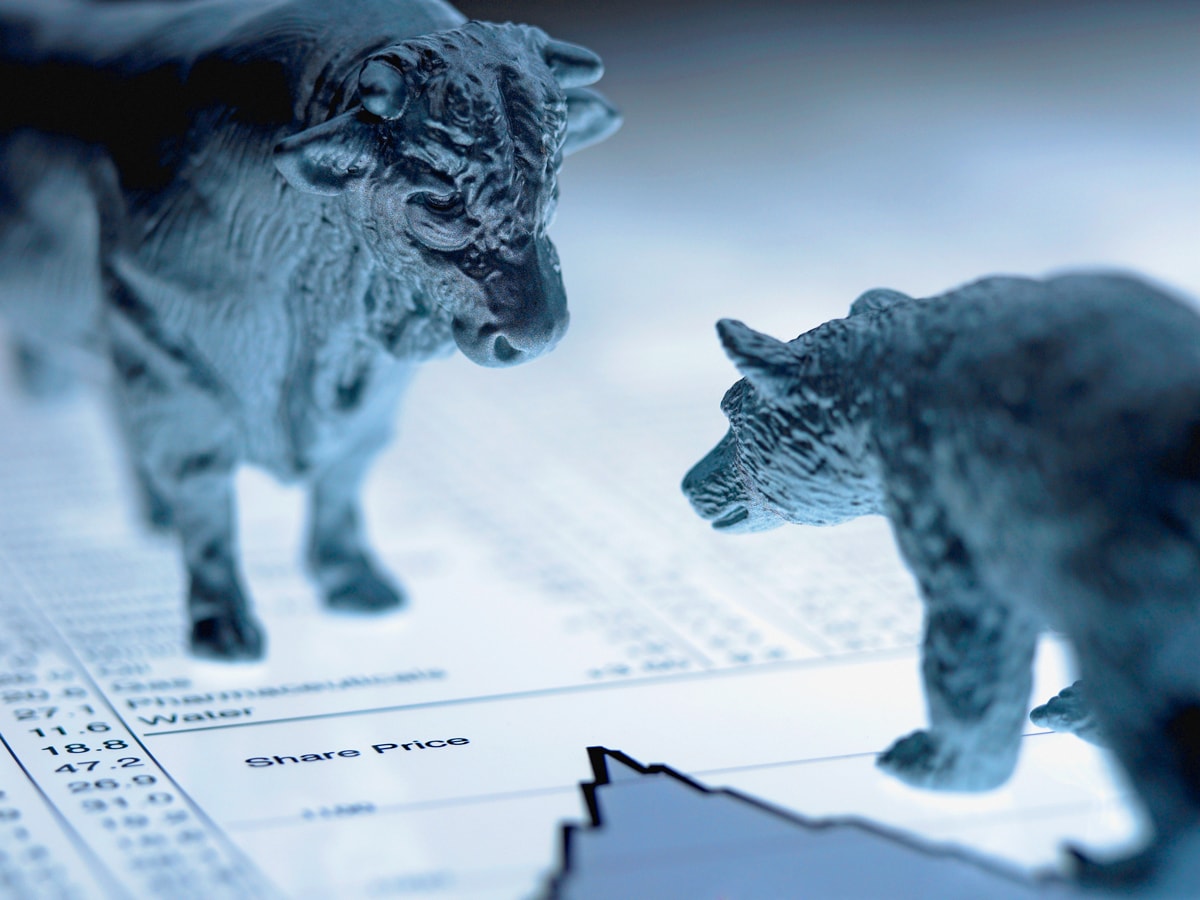Investments of all kinds carry risk, and it’s up to each individual to decide how much they are comfortable taking on for potential rewards they face. Mish Schneider unpacks how investors could consider risk when trading.
How much are you risking?
This is a key question to ask when making a trade and might even be the most important one to ask at the moment, as the market’s high volatility has created huge price swings recently.
Take the Retail Sector [XRT] for example.

In just the past five days of trading, XRT reached a new all-time high of $99.24 and now sits with Tuesday’s low at $75.28.
XRT’s average 10-day price movement has gone from $2.47 on 1/25 up to $7.58 (as of 2 February).
The average range has almost tripled!
Large price swings can create a tough trading environment as the market becomes harder to predict under these circumstances.
Therefore, no matter what type of trader you are, having a solid set of rules is a must.
So, let’s jump right in with some simple rules that can help anyone become a more profitable trader.
First, your reward must at least be double the risk.
For example, if you are risking $100 then you would expect to make $200.
Second, once you have reached the amount you originally risked you should not take a loss on the trade going forward.
This means that if you take a trade where you risked $100 and the profit reaches $100, but then comes back down, you would get out at your entry for $0 loss.
You might be bummed that you did not make any money, but at least you didn’t lose any.
Many people take quick profits and either kick themselves if the stock continues higher or congratulate themselves if the price retreats lower, but ultimately this can make trading even more tough as those traders will need to be right more often than not as their risk/reward is now skewed.
The last rule is to choose exactly how much you are willing to risk on a trade and then stick to it.
This is especially important for building consistent profits and to prevent bad trades from wiping out the progress of past gains.
Eventually, as you build more capital, you might decide to increase your dollar risk, but until then keep things simple and consistent.
This article was originally published on MarketGauge. With over 100 years of combined market experience, MarketGauge's experts provide strategic information to help you achieve your investing goals.
Disclaimer Past performance is not a reliable indicator of future results.
CMC Markets is an execution-only service provider. The material (whether or not it states any opinions) is for general information purposes only, and does not take into account your personal circumstances or objectives. Nothing in this material is (or should be considered to be) financial, investment or other advice on which reliance should be placed. No opinion given in the material constitutes a recommendation by CMC Markets or the author that any particular investment, security, transaction or investment strategy is suitable for any specific person.
The material has not been prepared in accordance with legal requirements designed to promote the independence of investment research. Although we are not specifically prevented from dealing before providing this material, we do not seek to take advantage of the material prior to its dissemination.
CMC Markets does not endorse or offer opinion on the trading strategies used by the author. Their trading strategies do not guarantee any return and CMC Markets shall not be held responsible for any loss that you may incur, either directly or indirectly, arising from any investment based on any information contained herein.
*Tax treatment depends on individual circumstances and can change or may differ in a jurisdiction other than the UK.
Continue reading for FREE
- Includes free newsletter updates, unsubscribe anytime. Privacy policy






